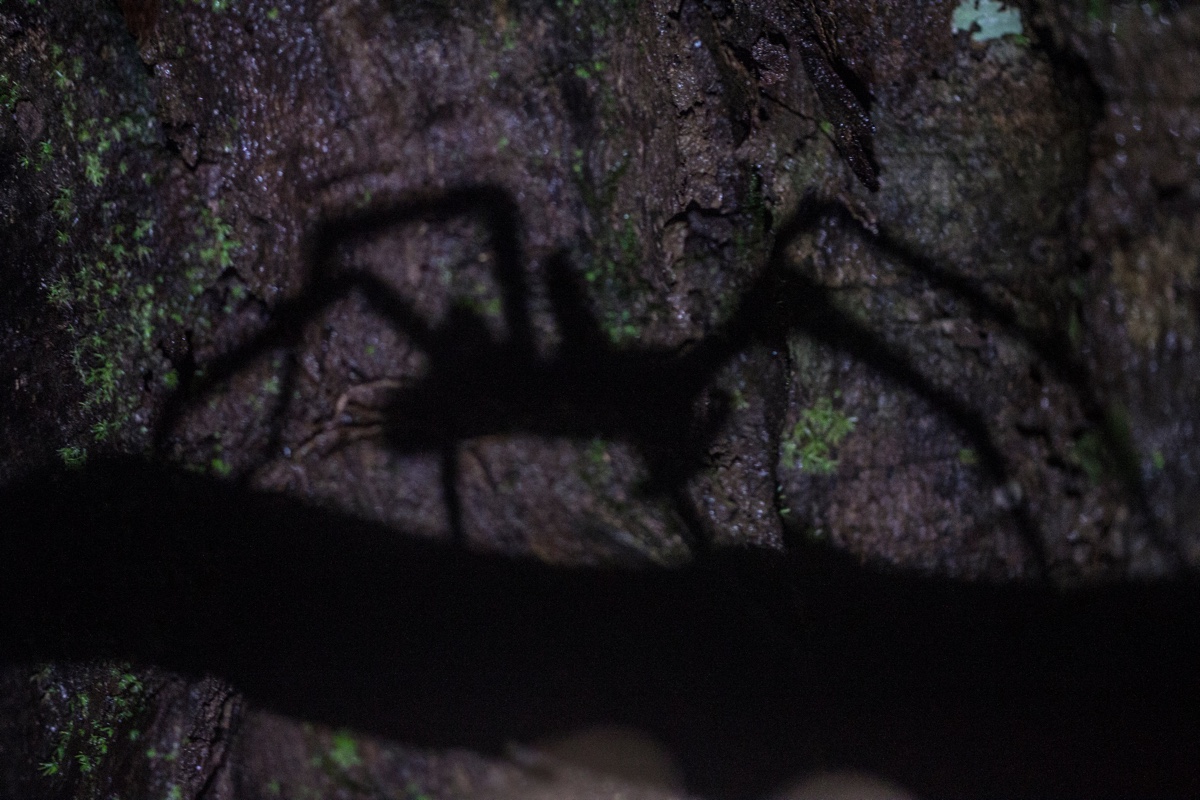Natural Viagra: Spider Bite Causes Erection

WASHINGTON — A Brazilian spider delivers more than a painful bite that sends most victims to the hospital. Its venom stimulates an hours-long erection. Now scientists have figured out the chemical that seems to be responsible for the penis boost. In Brazil, emergency room staff can immediately spot the victims of a bite from the Brazilian wandering spider (Phoneutria nigriventer). Patients not only experience overall pain and an increase in blood pressure, they also sport an uncomfortable erection.
"The erection is a side effect that everybody who gets stung by this spider will experience along with the pain and discomfort," said study team member Romulo Leite of the Medical College of Georgia. "We're hoping eventually this will end up in the development of real drugs for the treatment of erectile dysfunction."
The research was presented here at a poster session at the American Physiological Society (APS) annual meeting.
A recent, nationally representative study by researchers at Johns Hopkins University found that about 18 million men in the United States suffer from erectile dysfunction. Research has shown that about one in three men with mild to moderate forms of erectile dysfunction don’t respond to Viagra, with some of these men having success with either Levitra or Cialis. And men with severe erectile dysfunction have less success with the drugs. [5 Myths About the Male Body]
Rodent erections
Kenia Pedrosa Nunes of the Medical College Georgia, Leite and colleagues separated the different components of the spider venom and ran tests on rats to eek out the erectile enhancer. Dubbed Tx2-6, the compound turned out to be a relatively short string of amino acids called a peptide.
Then, they injected the venom-chemical into rats stimulated to begin an erection. A tiny needle-like device inserted into each rat’s penis measured the pressure change, which corresponds with the increase in blood flow to the blood vessels inside the penis. Compared with control rats, those injected with the peptide showed a significant increase in penis pressure.
Sign up for the Live Science daily newsletter now
Get the world’s most fascinating discoveries delivered straight to your inbox.
The scientists also found an increase in nitric oxide within the two main cylindrical cavities that run the length of the penis and are called corpora cavernosa.
Erection science
The significance of the nitric oxide is clear when the science behind an erection is considered: The brain senses sexual arousal in the body and certain neurons produce nitric oxide, a message telling the body to get started in making an erection. A cascade of biochemical steps occurs, one of which includes the production of an enzyme dubbed cGMP. This enzyme causes the smooth muscles of the penis’ two cylinders to relax so that blood can rush in and fill up the now expandable tubes. (A human penis can hold about 10 times more blood when erect compared with its non-erect state.)
"All of this leads to vaso-dilation of vessels that go through the penis and also relaxation of those [cylindrical tube muscles]," Leite told LiveScience. "They need to relax so the blood will come inside and that’s how you get an erection, because the blood gets trapped into the penis."
But erections don't last forever. The erectile party crasher, a substance called PDE-5 breaks down the cGMP and in turn transforms the erect penis into its normal limp state.
The most popular erectile-dysfunction drugs—Viagra, Cialis and Levtra—work by blocking this party crasher.
The spider chemical works in a different manner, affecting an earlier step in the erection process. Somehow, the toxin ups the amount of nitric oxide, which sort of sets into motion an erection. The scientists suggest that a combination of a synthetic version of the spider venom with a drug like Viagra would result in a magnified effect.
"So the combination of the two drugs could be even more efficient in patients that don’t respond well to Viagra," Leite said.
Jeanna Bryner is managing editor of Scientific American. Previously she was editor in chief of Live Science and, prior to that, an editor at Scholastic's Science World magazine. Bryner has an English degree from Salisbury University, a master's degree in biogeochemistry and environmental sciences from the University of Maryland and a graduate science journalism degree from New York University. She has worked as a biologist in Florida, where she monitored wetlands and did field surveys for endangered species, including the gorgeous Florida Scrub Jay. She also received an ocean sciences journalism fellowship from the Woods Hole Oceanographic Institution. She is a firm believer that science is for everyone and that just about everything can be viewed through the lens of science.










